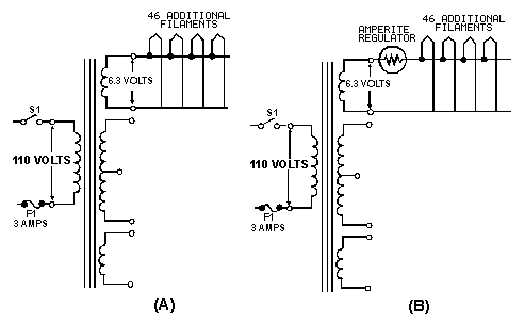3-46
CURRENT REGULATION
Before we go to the next section, there is one type of regulation that we should discuss-current
regulation. In most power supplies, current is not regulated directly. Fuses and other circuit protection
devices are used to set an upper limit on the amount of current that can flow in a power supply. Once this
limit is exceeded, the fuse simply opens and the power supply is deenergized. Beyond this, current is
usually left unregulated because the load will draw from the power supply only the amount of current that
it needs. Decreases and increases in the power supply voltage caused by the variations in load current are
usually controlled by the voltage regulator.
The Amperite Regulator
There are some cases in which current must be regulated or kept at a relatively constant value. The
best example of this is the filament supply of a power transformer located in a power supply that is
designed to supply filament power to many tubes. You can see this in view (A) of figure 3-49, which is a
portion of a power supply designed to supply 50 vacuum tubes with both plate and filament voltages.
Under normal conditions, circuit current will not exceed 2.5 amperes. For this reason, the power supply
has been fused at 3 amperes. Because you are only interested in current regulation at this time, only the
portion of the power supply that deals with current regulation is shown; namely, the power transformer
and four of the 50 parallel connected vacuum-tube filaments. At operating temperatures, the resistance of
each filament is 1 kilohm. Because the filaments are connected in parallel, the total filament resistance at
operating temperature is 20 ohms. Ohm's law,
Figure 3-49.—Amperite regulator.


